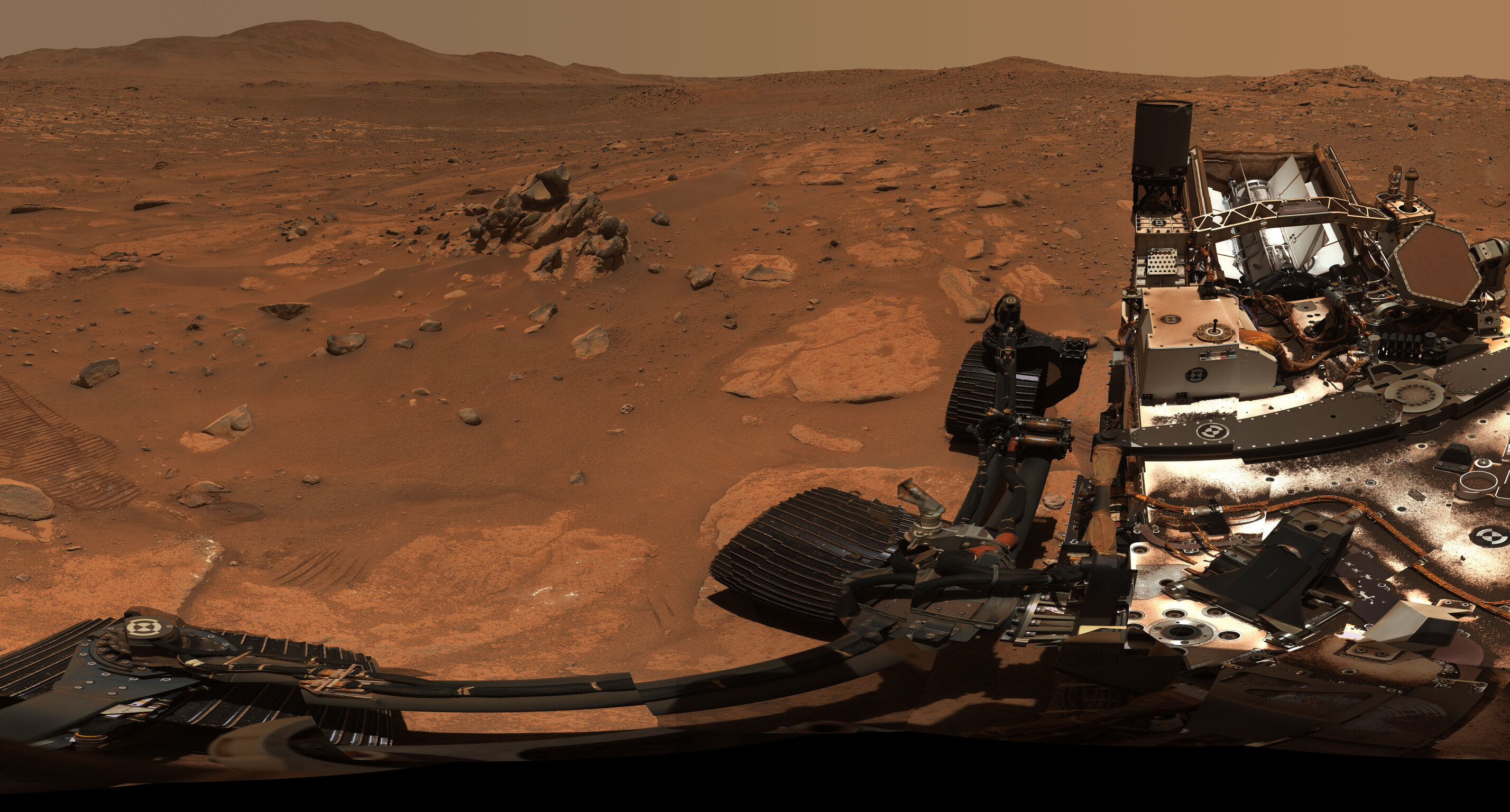NASA's Perseverance rover captures 360-degree view of Mars' Jezero Crater (video)
Project scientist Ken Farley walks us through the scene.
On Dec. 12, 2023, NASA's Perseverance rover reached a milestone — 1,000 Martian days, or sols, on Mars. To celebrate, NASA released a 360-degree mosaic of the rover's current location, as well as a video walkthrough of the scene narrated by Perseverance project scientist Ken Farley.
The composite image comprises 993 individual images taken with Perseverance's Mastcam-Z instrument last year on Nov. 3, Nov. 4 and Nov. 6, and includes a whopping 2.38 billion pixels.
You might notice there's a big difference in color between the team's image included in this article and the video — the image shows the natural colors on Mars as captured by the camera, while the image in the video has been adjusted to Earth-like lighting. According to NASA, "the adjustment allows mission scientists to use their everyday experience to interpret the landscape."
That landscape is Jezero Crater, where a river had flowed into an ancient lake an estimated 3.5 billion years ago. In addition to studying the geology of the crater, scientists are looking for past signs of microbial life.
Related: NASA's Ingenuity Mars helicopter sets new distance record on the Red Planet

Right now, Perseverance is sitting atop what the team calls "Airey Hill," and the landscape here shows signs of water — the flat, light-colored rocks were likely deposited on the banks of the slow-flowing river, while the larger boulders might've been dropped into place by a strong flood event.
One unusual rocky outcropping has piqued the interest of the team, which suspects it might represent the remnants of an old lava flow. "Lab equipment on Earth can accurately measure when a volcanic rock was formed, so if we can return a sample of this lava to Earth in the future, we may know when and for how long water flowed into Jezero," Farley says in the video.
Get the Space.com Newsletter
Breaking space news, the latest updates on rocket launches, skywatching events and more!
Previously, Perseverance studied the crater floor before working its way through the sediments of the river delta. Next, it will work its way "upstream" to the point where the river carved a canyon in the crater rim. Then, Perseverance will climb its way up a natural ramp to the rim itself.
"One tempting target are these light-colored rocks partway up the rim," says Farley. "They may have interacted with hot water in a hydrothermal environment – another exciting place to hunt for evidence of past life."
Join our Space Forums to keep talking space on the latest missions, night sky and more! And if you have a news tip, correction or comment, let us know at: community@space.com.

Space.com contributing writer Stefanie Waldek is a self-taught space nerd and aviation geek who is passionate about all things spaceflight and astronomy. With a background in travel and design journalism, as well as a Bachelor of Arts degree from New York University, she specializes in the budding space tourism industry and Earth-based astrotourism. In her free time, you can find her watching rocket launches or looking up at the stars, wondering what is out there. Learn more about her work at www.stefaniewaldek.com.









